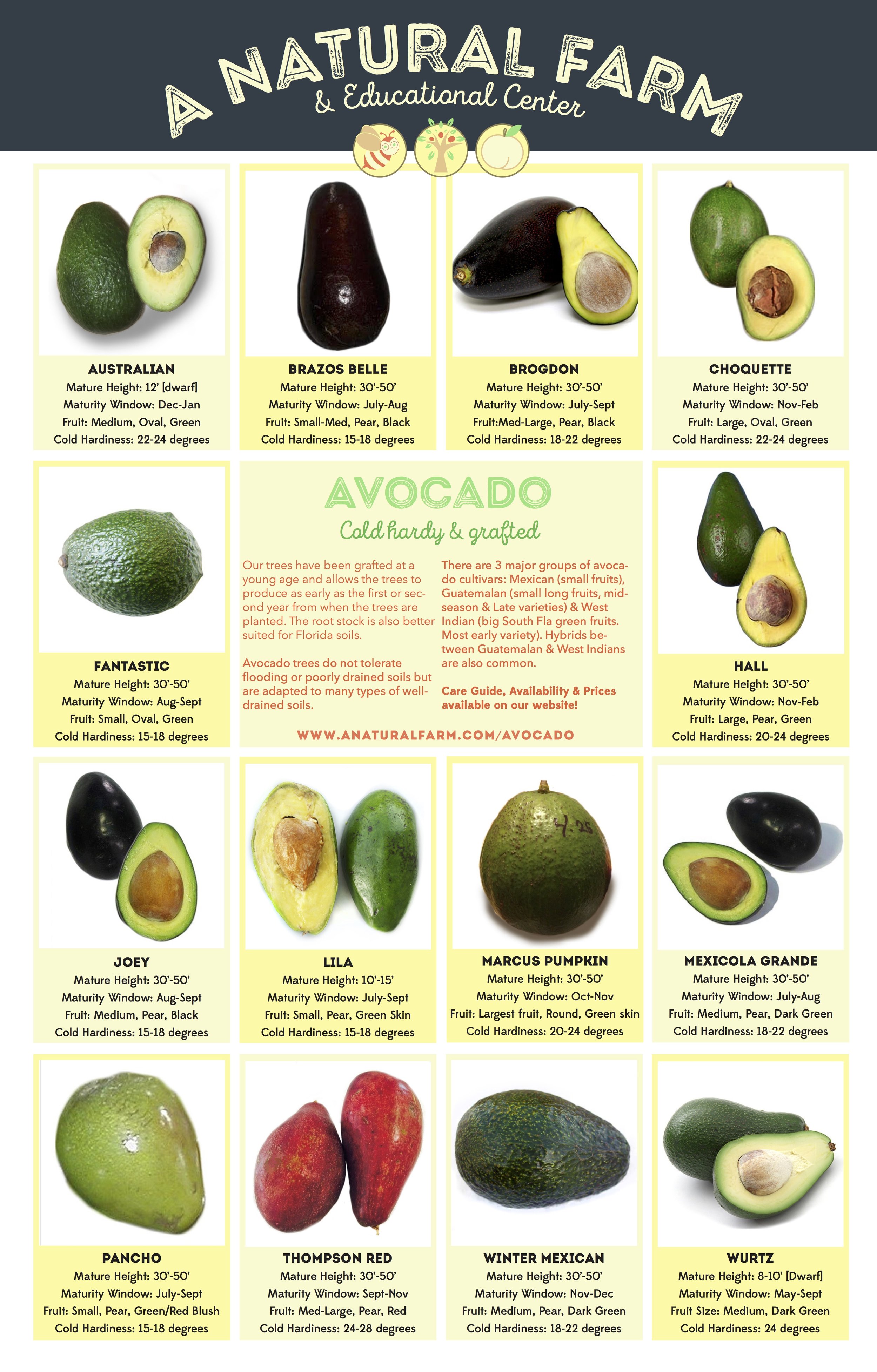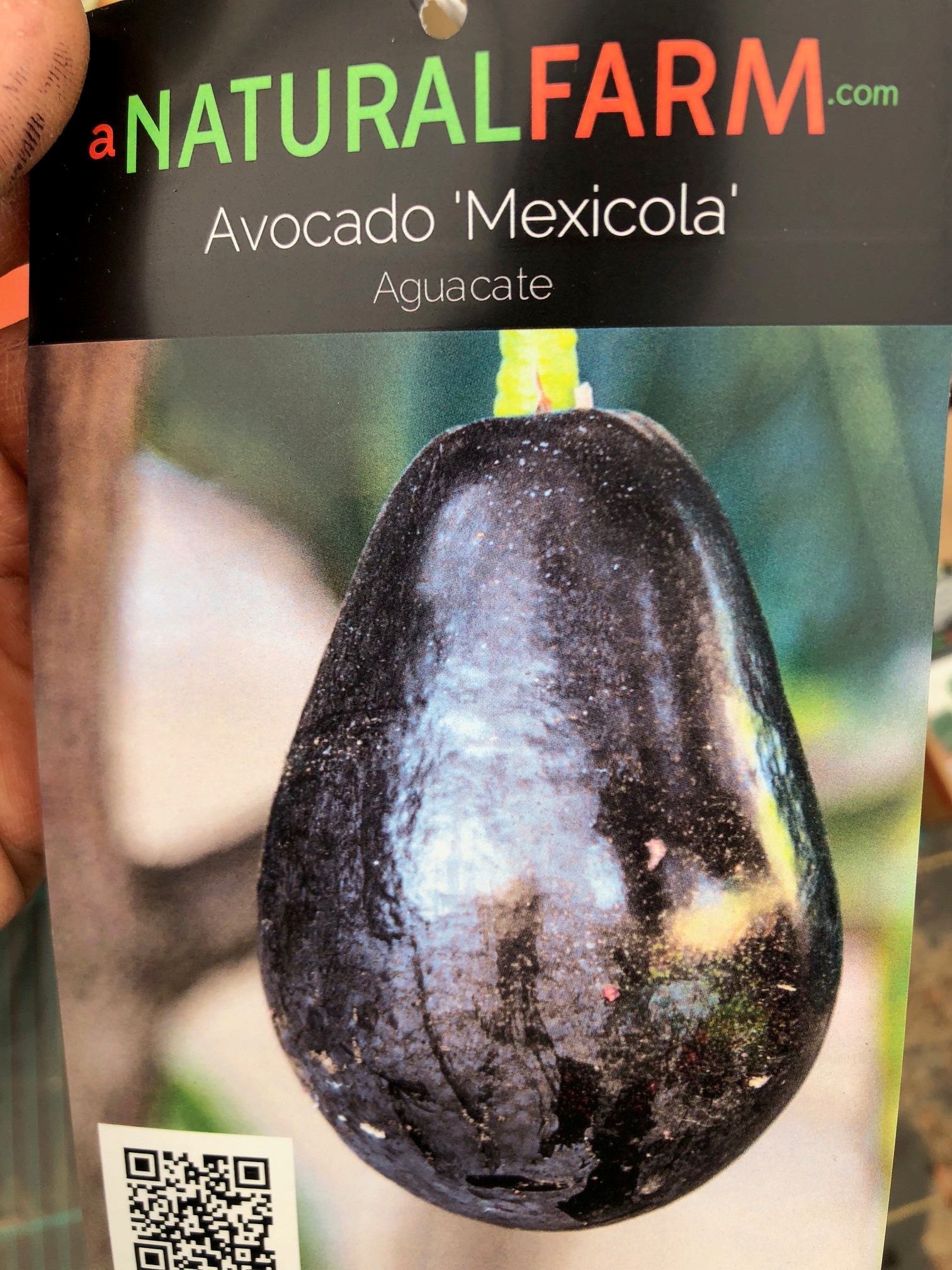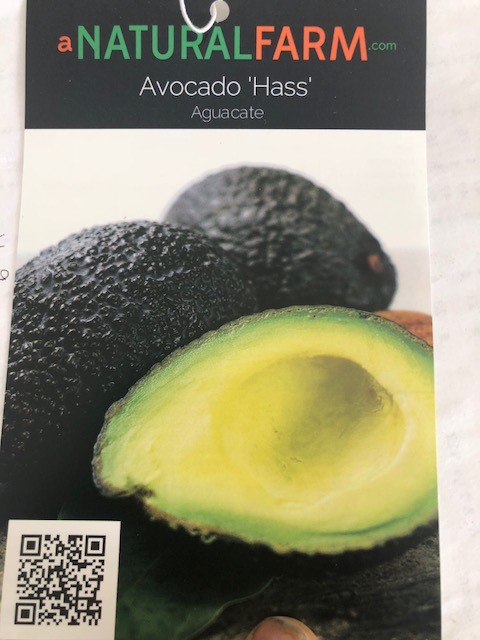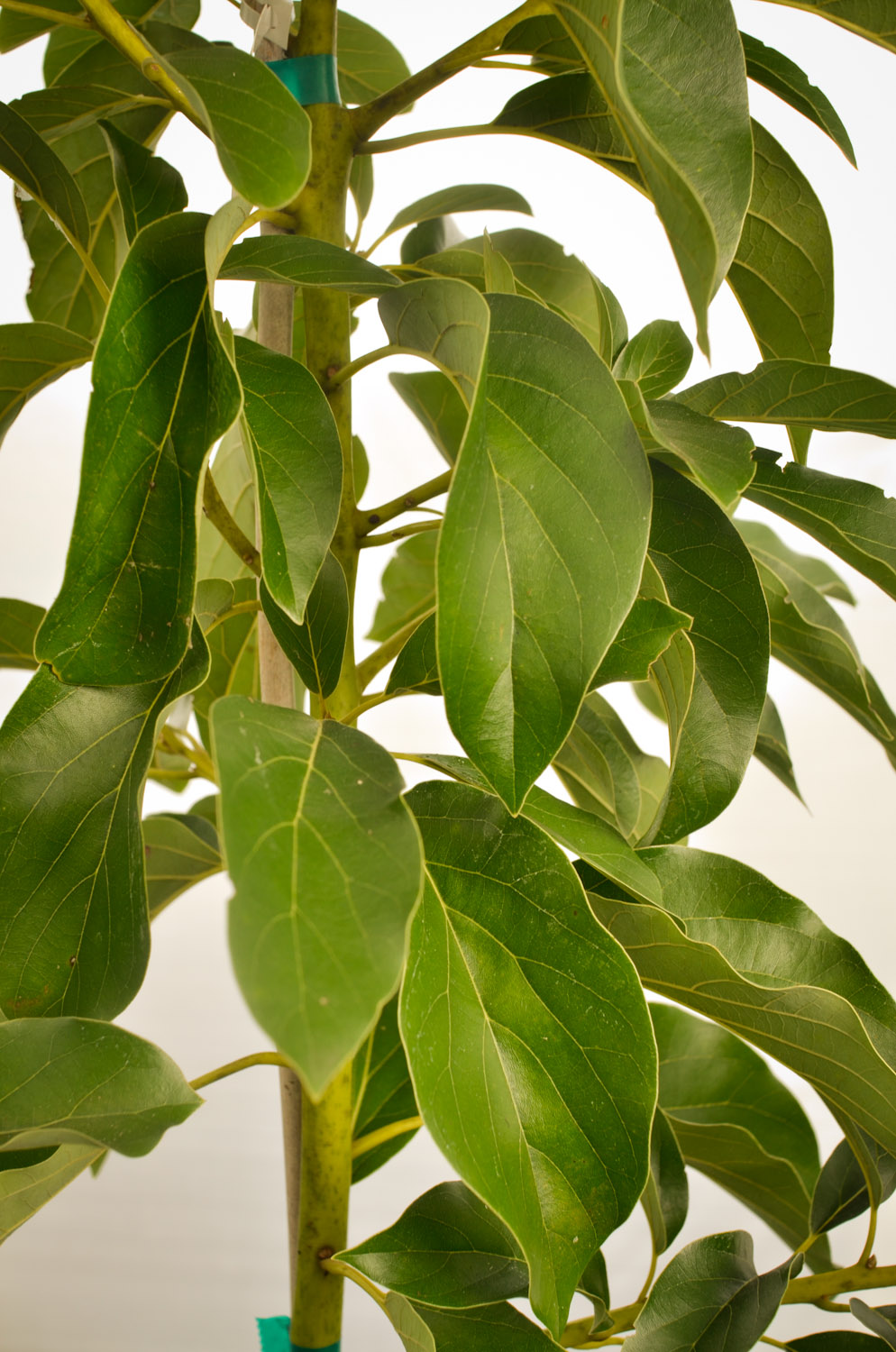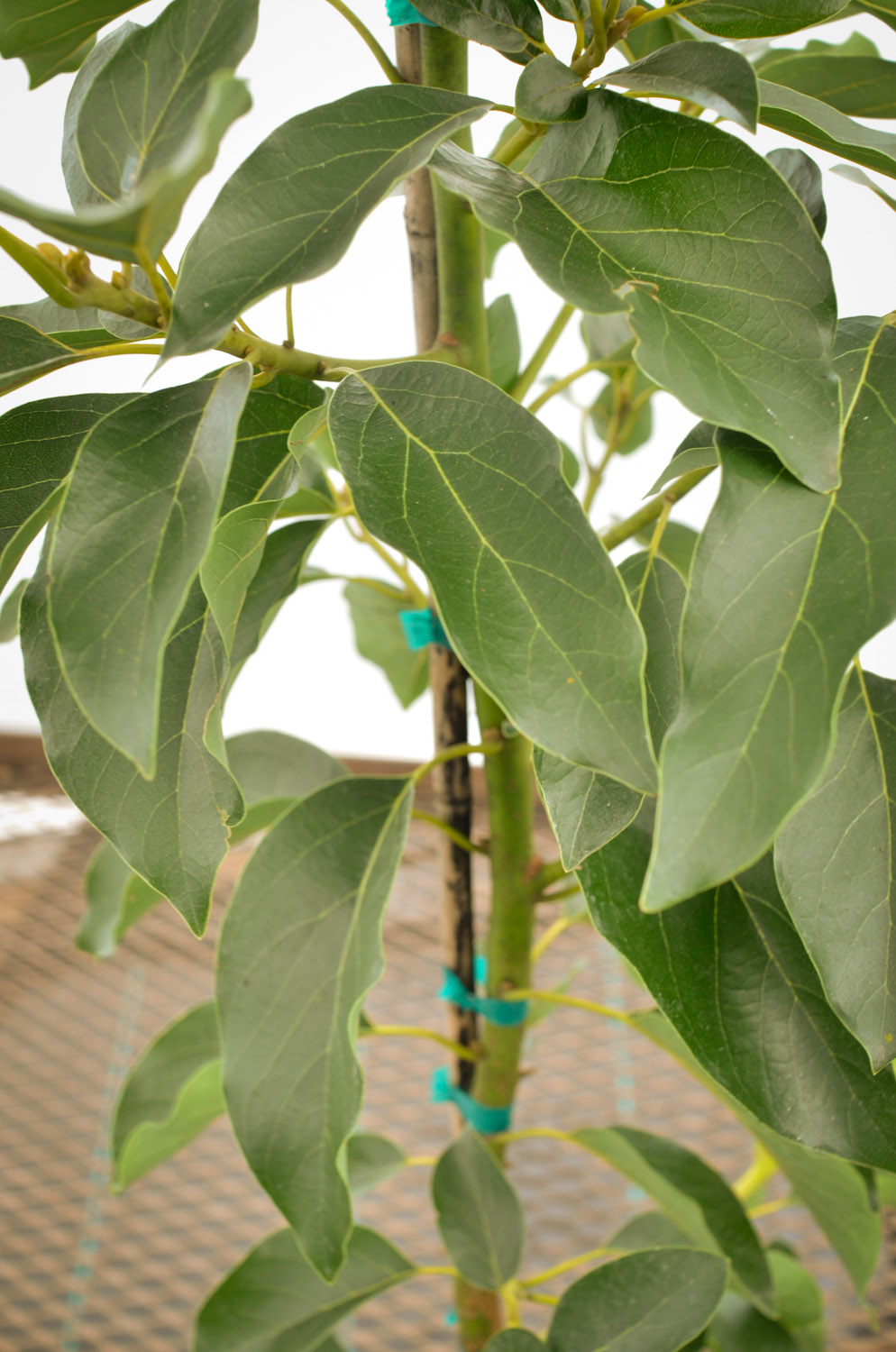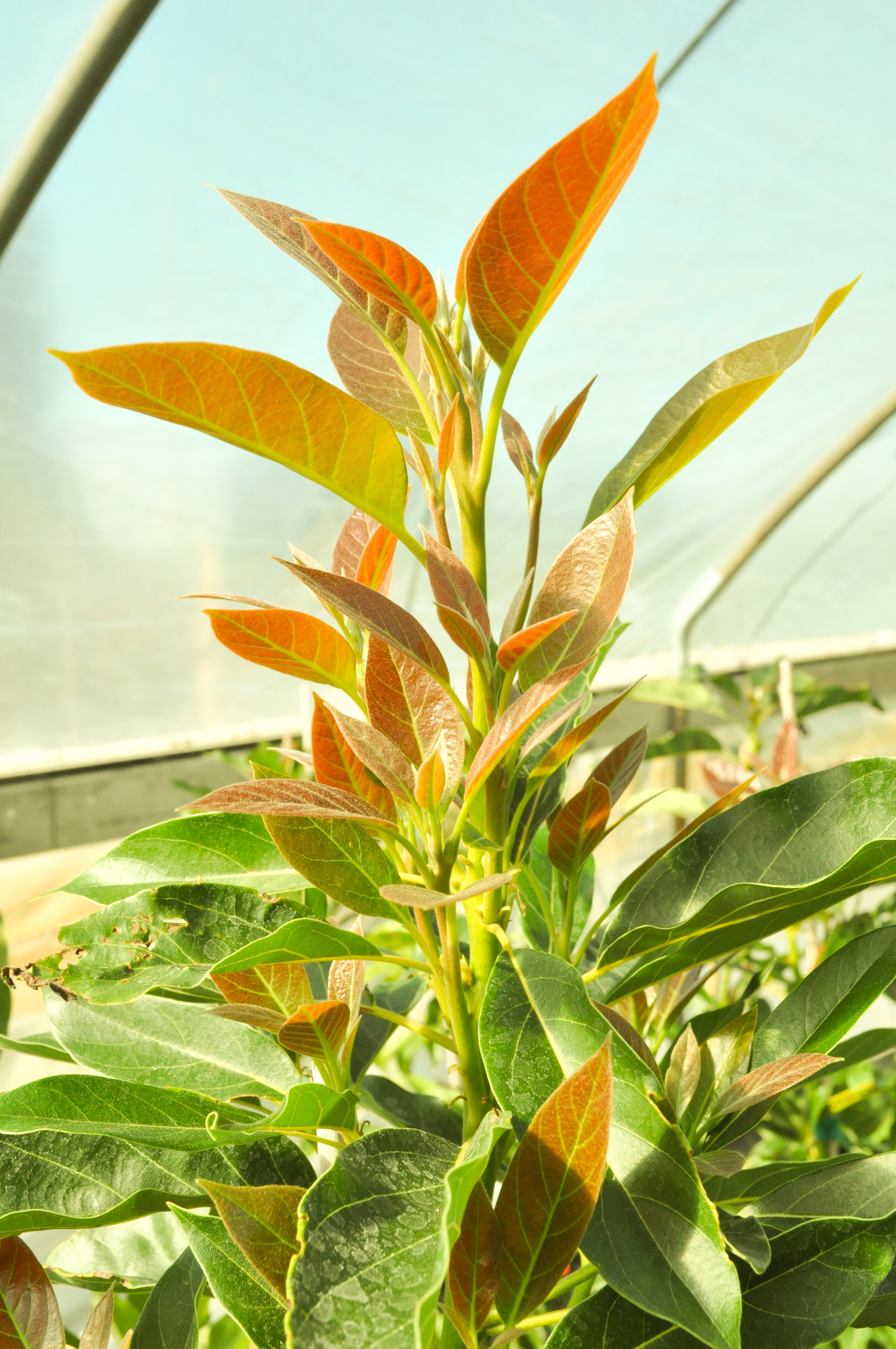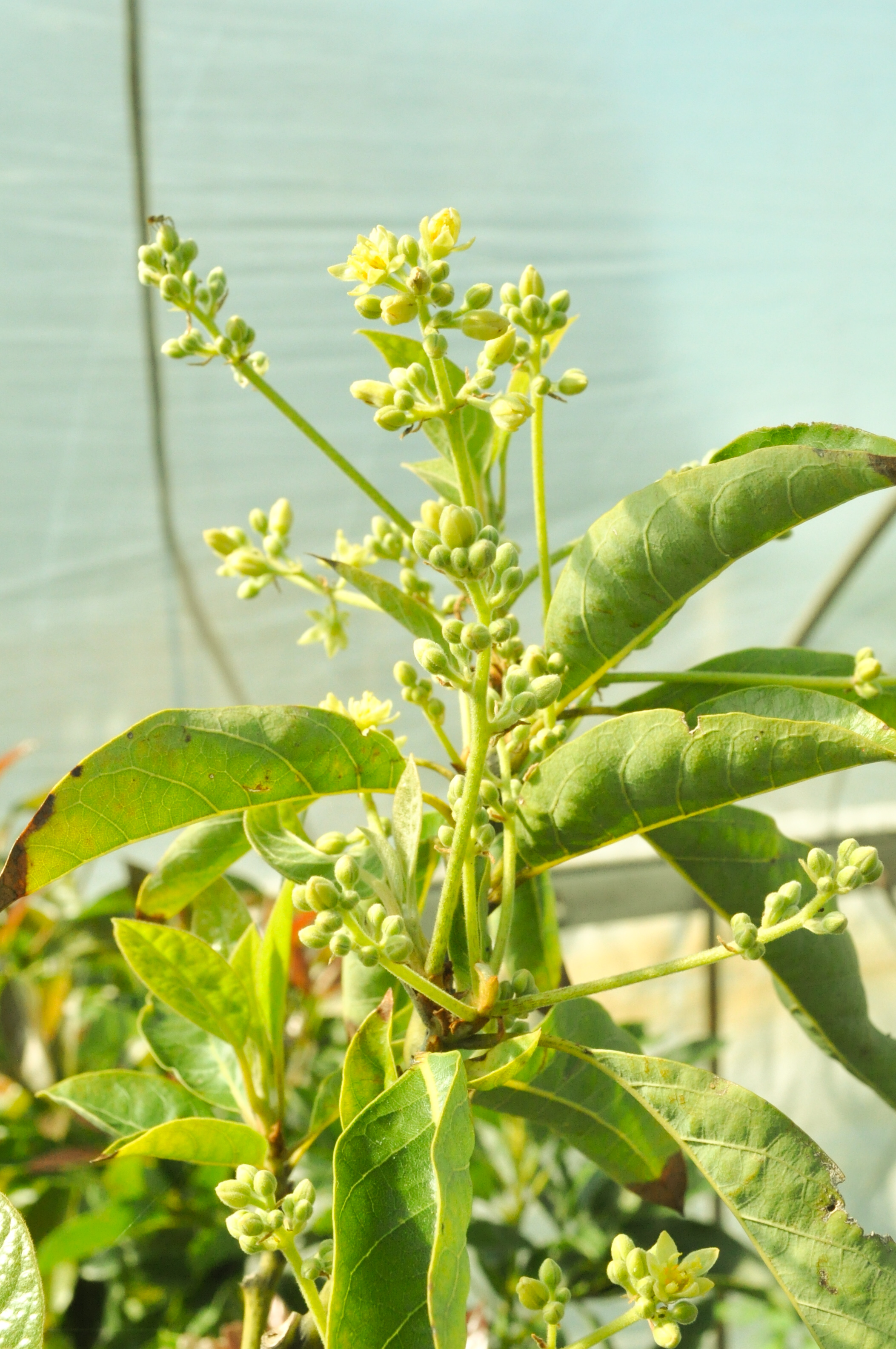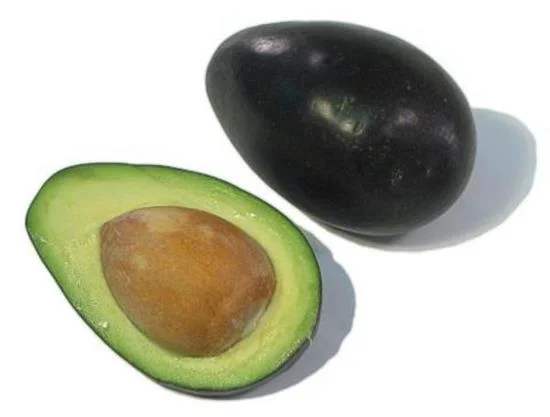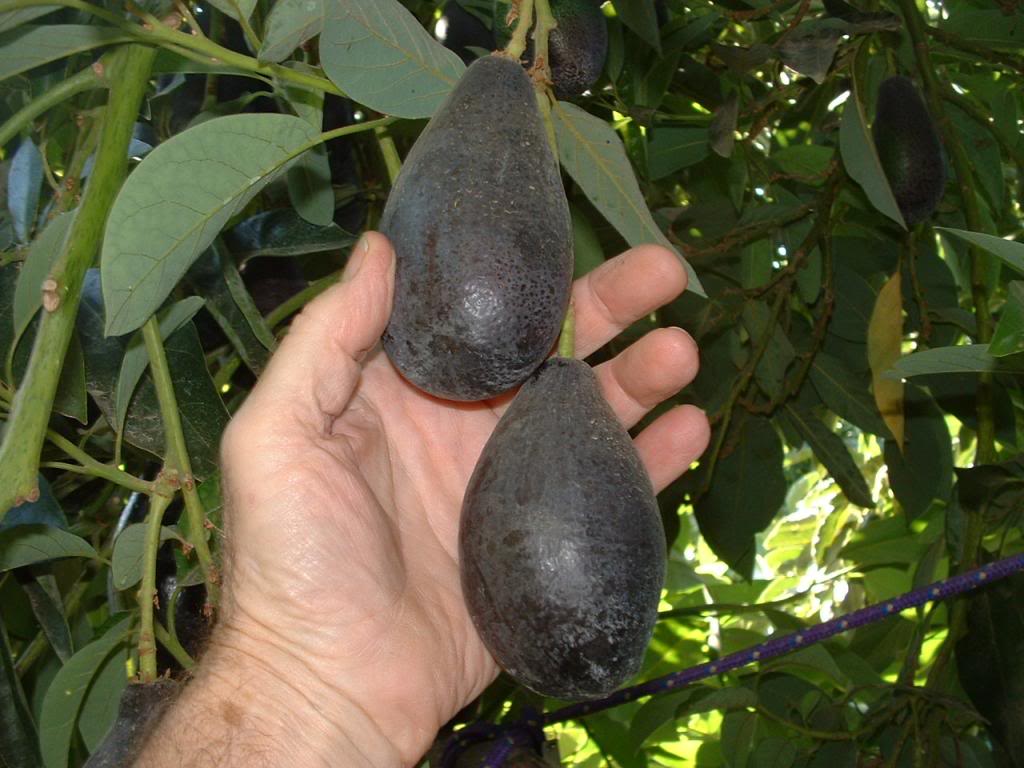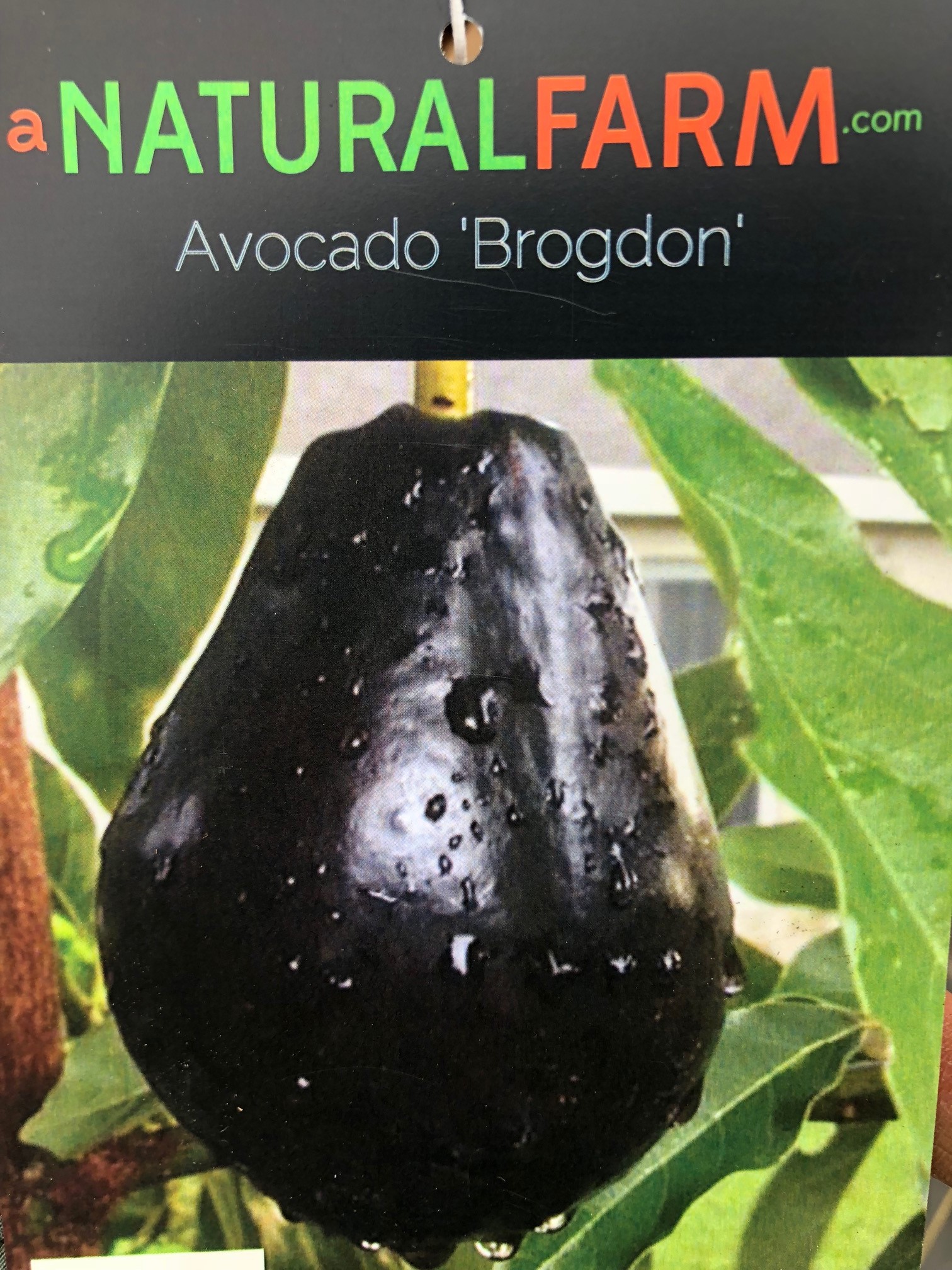Avocado Tree Grafted Free Shipping. Cold tolerant when mature. 'Super Haas', 'Brogdon', 'Winter Mexican'
Avocado Tree Grafted Free Shipping. Cold tolerant when mature. 'Super Haas', 'Brogdon', 'Winter Mexican'
For sale is a live plant with established root system in a pot.
***Images of fruit or edible qualities are provided from our nursery's stock of producing plants to show the potential yield of our fruiting & edible plants.
Avocado grafted Tree varieties currently available, ‘Brogdon’, ‘Haas’, ‘Super Haas / Ooh la la’, ‘Day’, ‘Fantastic’, ‘Wurtz’, ‘Poncho’, ‘Winter Mexican’
Pot Size: 3 gallon (2-3 years old), 7 gallon (3-4 years old)
Height depending on variety and pot size (18” to 40” tall including pot height for trees in 3g pots, 50” tall including pot for trees in 7g pots)
Fruiting Age: Grafted trees fruit second year in the ground
Propagation Method: Grafted on reliable root stock for cold hardiness
Or Avocado Tree, Grafted ‘Fantastic’, ‘Brogdon’, ‘Winter Mexican’, ‘Hass’ varieties in 7 gallon size (50” tall including pot height)
Pot size: 7 gallon (3 to 4 years old, 50” tall including pot)
Plants are staked with soil, sealed in a plastic wrapping to retain moisture during shipment. When you receive this plant, simply remove the plastic and check moisture in the soil. Water the plant once per day while in their container. Plants have also been fertilized for the season.
All of our plants are cared for with natural practices, without the use of synthetic chemicals. However, our nursery is considered a Plant Sanctuary. Some plants we sell are brought in from other nurseries who do not follow the same standards of quality that we do. Once a plant arrives at our nursery, they are cared for with organic and natural practices.
We hand select for each order from our stock of premium quality plants at A Natural Farm in Howey-in-the-Hills, Florida. Quality in plant propagation is of upmost importance when seeking nutrition & medicinal value from edible plants!
***********************************
Note: A/B Pollination requirements does not apply in the climatic conditions of the U.S South East (FL, GA, TX). West coast customers will want to consider pollination for cultivars.
*Cultivars Available:
Brogdon:::
Produces high quality, larger dark-purple pear shaped fruits with buttery yellow flesh, perfect for guacamole. Skin is thin and can be eaten with the fruit flesh. Our farm's favorite! Mexican Variety
Mature Height: 30’-50’
Maturity Window: July-Sept
Fruit: Med-Large, Pear, Black
Cold Hardiness: 18-22 degrees
Fantastic:::
Green to dark olive colored fruit with thin skin and a creamy textured flesh. This is most hardy cultivar available, withstanding 15 degrees for a short time without protection. Mexican Variety.
Mature Height: 30’-50’
Maturity Window: Aug-Sept
Fruit: Small, Oval, Green
Cold Hardiness: 15-18 degrees
Joey:::
Produces egg-shaped black fruits with a thin skin. This Mexican Variety is a heavy bearer and very cold hardy.
Mature Height: 30’-50’
Maturity Window: Aug-Sept
Fruit: Medium, Pear, Black
Cold Hardiness: 15-18 degrees
Marcus Pumpkin
The Goliath of the Avocados - up to 48oz (4lbs) of fruit! Good creamy texture. Rare & hard to find.
Mature Height: 30’-50’
Maturity Window: Oct-Nov
Fruit: Largest Fruit, Round, Green Skin
Cold Hardiness: 20-24 degrees
Oro Negro
Ripens to a shinny black almost like patent leather. Oro Negro means black gold in Spanish, which is an incredibly appropriate name for this fruit. The flesh is rich and buttery with a creamy texture that is sure not to disappoint.
Mature Height: 30’-50’
Maturity Window: Nov-Jan
Fruit: Large, Round, Black Skin
Cold Hardiness: 20-24 degrees
Winter Mexican:::
Produces small high quality black fruits with excellent flavor similar to the classic Hass avocado. Produces early & regularly throughout fruiting season.
Mature Height: 30’-50’
Maturity Window: Nov-Dec
Fruit: Medium, Pear, Dark Green
Cold Hardiness: 18-22 degrees
For All Avocado Varieties:
USDA Hardiness Zones: 9b-11
Chill Hours: -
Deciduous/Evergreen: Evergreen
Plant Type: Perennial
Edible Qualities/Products: Med-Large sized fruit, Pear Shape, Black Skin. Grafted - 1-2 years to produce fruit
Climax Height & Spread: 30'+ high
Cold Tolerance: Cold hardy to 22-24 degrees
Light Requirements: Full Sun for more fruits
Drought Tolerance/Watering Requirements: Good once established, Avocados prefer infrequent deep root watering. Do not over water, as root rot is common with Avocado trees kept wet.
Soil & Site Requirements: Well Drained Soil, if soil contains heavy clay, plant in a raised bed with compost and well drained soil. Dig out soil to loosen a large hole and replace with native soil back into hole. Avoid amending soil and fertilize every month after the first month as a topdress. Mulch 3-5ft. to retain moisture & reduce weed competition.
***********************************
GRAFTED TREES AND TREES GROWN FROM SEEDS
Avocado trees can easily be grown from seeds/fruits you get at the grocery stores. Unfortunately those trees will take 8 to 20 years to fruit in your garden. The trees offered at A Natural Farm have been grafted at a young age and allows the trees to produce as early as the first or second year from when the trees are planted. Not only is fruiting earlier, but the root stock is better suited for Florida soils. When growing from seed, many times these are Avocados grown in California or Mexico, with different climates and soil structures, ill suited for our Florida conditions.
PRUNING
During the first 2 years, a formative pruning is desirable to encourage lateral branching and growth. After several years of production it is desirable to cut back the tops of the trees to 10 to 15 feet. It will help prevent the loss of the lower tree canopy due to shading by the upper canopy and will facilitate tree care and fruit harvest.
This pruning should be done after danger of frost has passed in order to not stimulate young growth that could be hurt by the cold.
REMOVAL OF “SUCKERS”
Once in a while young shoots will grow below the graft point of your tree (rootstock part of your tree). You want to remove those “suckers” as soon as possible because if left alone they will grow aggressively and will not produce the fruits you are looking for in your tree.
POLLINATION
Avocado trees have both male and female flowers on the same tree, making them self-fertile. How- ever, planting more than one avocado tree of the same variety or different varieties will increase fruit production.
HARVEST, RIPENING, AND STORAGE
Avocado fruits do not ripen on the tree. The easiest way to determine if your avocados are ready to harvest is to harvest one large fruit and place it on your kitchen counter top. A mature fruit ripens in 3 to 8 days after it is picked. If the fruit does not ripen properly (e.g., shrivels, becomes rubbery or exhibits stem end rot), select another fruit (again larger fruit are generally more mature than small- er fruit at the beginning of the season) and repeat the test.
***********************************
*Planting Instructions*
SOILS
Avocado trees do not tolerate flooding or poorly drained soils but are adapted to many types of well-drained soils. Continuously wet or flooded conditions often result in decreased growth and yields, nutrient deficiency symptoms, dieback, and sometimes tree death. Under these conditions, trees are highly susceptible to root infection by Phytophthora fungi.
In Florida avocado trees grow well and produce satisfactory yields in sandy and limestone soils. If your planting spot is subject to potential flooding, create a soil mound and plant your tree on top of this mound.
SITE SELECTION AND SPACING
In general, avocado trees should be planted in full sun for best growth and fruit production. Select a part of the landscape away from other trees, buildings and structures and powerlines. Remember avocado trees can become very large (30+ feet) if not pruned to contain their size.
Select the warmest area of the landscape that does not flood (or remain wet) after typical summer rainfall events.
If you plant more than one avocado tree, keep a spacing of about 20’ between the trees
IRRIGATION
Newly planted trees should be watered at planting and every other day for the first week or so and then 1 to 2 times a week for the first couple of months. During prolonged dry periods (e.g., 5 or more days of little to no rainfall) newly planted and young avocado trees (first 3 years) should be well watered twice a week. Once the rainy season arrives, irrigation frequency may be reduced or stopped.
Once avocado trees are 4 or more years old irrigation will be beneficial to plant growth and crop yields during prolong dry periods. Especially during the period from bloom and through fruit development.
PLANTING IN SANDY SOILS
Prior to digging a hole, remove a 3 to 10 ft diameter ring of grass sod. Dig a hole 2 to 3 times the diameter and 2 times as deep as the container the avocado tree has come in. Making a large hole loosens the soil adjacent to the new tree making it easy for the roots to expand into the adjacent soil. It is not necessary to apply fertilizer, topsoil, or compost to the hole.
Backfill the hole with some of the native soil re- moved to make the hole. Carefully remove the tree from the container and place it in the hole so that the top of the soil media of the container is level with or slightly above the surrounding soil level. Fill soil in around the tree roots and tamp slightly to remove air pockets. Immediately water the soil around the tree and tree roots and stake the tree to protect it against strong winds until the roots are strong enough to hold the tree in the native soil.
Mulch heavily with loose organic bedding materials to protect over cooler months while plant is dormant and retain moisture in the warm months. To maximize yield and ensure a healthy life of your fruit tree: mulch around the drip line, topdress with compost, vermicpompost & organic matter regularly, use organic fertilizer high in nitrogen 2-3 times per year, garden with companion plants of cover crops, flowering plants and herbs!
*************************
:)

